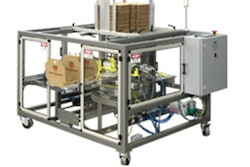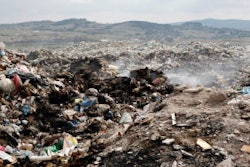
Recently The Coca-Cola Co. announced that it had launched new PlantBottle packaging for its Odwalla brand that uses 100% plant-based HDPE. It also noted that its 30% plant-based PET PlantBottle for Dasani is now available nationally. In this Q&A, Scott Vitters, general manager of the PlantBottle Packaging Platform, provides insight into the significance of these achievements for Coca-Cola and for the larger packaging community.
Greener Package: How did it come about that Odwalla decided to use the PlantBottle technology?
Scott Vitters: For Odwalla, as part of their brand promise and values, they have always stretched themselves in terms of environmental performance, and environmental and social commitments. They have a customer base that not only wants to see that, but also expects to see that in the marketplace. For some time we had been looking at how we could continue to enhance the environmental performance of the unique package that they use. They are in a high-density polyethylene bottle, because the product is hot-filled and has a short shelf life. So it was a natural extension from the work that we have been leading in PET to look for an opportunity to be able to move them into a plant-based HDPE container.
Within all our brands, we are looking for opportunities to bring new innovation to those products. We don’t use a lot of HDPE within our business system. So we had been looking for an appropriate application from a global innovation perspective of where we might apply it. Odwalla quite frankly was the perfect place in terms of being able to step out with this technology given the brand positioning on environmental and social issues coupled with the fact that they were in HDPE.
When you look at our business systems, 60% of our volume is in PET. So where we have our biggest impact and where we perhaps can make the greatest change is in PET. We have driven a lot of the technology innovation as we look at plant-based plastics. On the Odwalla project, we have worked with a partner, Braskem of Brazil, in terms of the technology versus leading on the technology development. But we are happy to provide the leadership in terms of bringing that material into the market and being the first brand in the U.S. to use plant-based HDPE nationally for a beverage container.
GP: Isn’t this the first beverage brand anywhere to transition to this type of package?
Vitters: We are very conservative within this space because we don’t have a total lens to the market globally on HDPE. I am not familiar with it [a 100% plant-based, recyclable HDPE beverage bottle], but that doesn’t mean it doesn’t exist. However, within this marketplace, I am comfortable with what we have said.
GP: So your relationship with Braskem is a new one?
Vitters: Right. Within the polyethylene space, they are the primary player today. So you can get pretty good clarity in terms of what’s happening in that marketplace through them. I think you will see expansion into that market. Obviously others have talked about it for some time, but they clearly have a leadership position as it relates to the plant.
GP: Could you give me some history on the development of this bottle? What are the differences in this technology from the PET PlantBottle?
Vitters: I think it’s helpful to first think through the PET side. In PET you’ve got two core ingredients: ethylene glycol and terephthalic acid. Ethylene is a precursor to ethylene glycol. We have technology that is replacing ethylene or making ethylene from ethanol. That ethylene glycol, that one ingredient by weight is up to 30%. So that’s the commercialization in terms of the supply-chain approach that we are putting in place around the world right now, in terms of rolling out all across all of our PET packaging. We are also investing from an R&D standpoint in the 70% that is the remaining terephthalic acid. Within polyethylene, or in this case high-density polyethylene, you only have, to make it simple, the one ingredient. So being able to replace that single ingredient, the ethanol to ethylene, can enable you to make a 100% [plant-based] bottle.
The limitation is that the HDPE obviously doesn’t have the same performance characteristics to be able to meet the needs across all of our packaging, whether you are talking about carbonation retention or shelf-life expectations. But for products like a natural juice, it works quite well. In fact, consumers like both the form and function of the HDPE container for that brand.
GP: Were you involved at all with Braskem in developing this technology?
Vitters: No. On the HDPE side, there are a number of others that have been leading in the technology development. For us, the leadership is really around the investment of moving out with this technology and commercializing it as an early adopter. Again, it’s different than what we are doing on PET. There are a couple of reasons that we are particularly attracted to it. Clearly, from an innovation leadership space, PET is where we are putting a lot of resources for obvious reasons, given the volume and scale that we use the PET material. Within the HDPE industry—and ultimately you will see the polypropylene industry move in this direction as well—as we look to closures for PET, getting started with a relationship and working with those business partners in this space is attractive to us. But as I said earlier, we don’t use a whole lot of HDPE for packaging containers within our business system today at all.
GP: With the PET PlantBottle, you’ve talked a lot about how the resin functions in exactly the same way as petroleum-based PET. Is this the case with the plant-based HDPE as well?
Vitters: Yes, and this is where I think what we are doing across the entire commodities plastics industry is catalyzing this movement toward evolving commodity plastics to being decoupled from fossil materials. Through our leadership starting in PET but now also continuing to polyethylenes, and you can also extend this into polypropylene and even PVC, what you really start to see is that almost the entire commodities plastics space has a path forward in terms of being able to decouple from petrol sources while remaining fully recyclable. For us, both for PET and HDPE, which are the most recycled plastics in most markets around the world, that’s important. HDPE is the most recycled plastic in the U.S.
GP: The Coca-Cola Co. has made significant investments in PET recycling. Have you done anything with HDPE recycling?
Vitters: Again, we have supported programs, but if you look at our general investment in recycling, I would point more to the support versus a specific focus on advancing end markets for HDPE. I have to keep coming back to where we need to be prioritizing our focus given where our impacts are. So knowing that we have got a few brands using HDPE, we have made sure that the market continues to improve, but we do it largely as part of our PET initiatives.
Like I said, HDPE is highly recycled within markets around the world today. For the same reasons we have argued with PET, you wouldn’t want to move to a renewable material, yet forego the advances that have been made to recovering and reusing the material again and again and again. That’s the mistake that I think a lot of people have made in the past of thinking that just because it’s renewable or plant-based, it’s inherently better environmentally, which is not necessarily the case. You need to step back and look at both: What are the plants? Where are they from? What’s happening to the material at its end of life?
So really where you see a Coke strategy emerging, for us to be economically and environmentally sustainable, instead of coming up with entirely new polymers, how do you take existing polymers that have been optimized—there is a lot of existing infrastructure in place—but now make them even better by moving them toward a renewable source.
GP: Do you have any sense of if whether the new renewable HDPE bottle has a better environmental footprint than a petroleum-based HDPE bottle?
Vitters: Yes, when you look at a metric, let’s say carbon, right now we are getting around a 12% to 19% improvement in PET, and that will continue to move upwards to 30%. Within HDPE, we are seeing upwards of an 80% improvement in carbon.
GP: When Coca-Cola announced the launch of the Odwalla bottle, in the same press release, it talked about the fact that it has launched the Dasani bottle nationally. I almost felt in reading the release that there was a bigger emphasis on the Danani news, which surprised me a little bit, given that the Odwalla news was really big.
Vitters: You can’t underestimate the significance of what you are seeing taking place on the PET side. Basically, we are moving from a rollout that started on the West Coast and was moving East, and now being able to have the PlantBottle packaging offered across the U.S. What that really is is a signal of the evolution of the supply chain that we are building out. So we started out with one plant with the ingredient, one plant making the resin, and then shipping that out to markets around the world. Today we are making PlantBottle PET packaging in most of our major markets.
Now we have PlantBottle packaging being made in the U.S, obviously improving the efficiency, which helps both economically and environmentally. The next step with building a supply chain is expanding the capacity of where the ingredient gets made. So as you look ahead, that’s where you will see news as we work to build out additional plants. We look to additional sources of where the ingredient is coming from. What that means is today, for environmental and social reasons, we focused on Brazilian-grown sugarcane, there is a lot of work that’s taking place in biomass or cellulosic technology, the waste from plants. What may be of interest to people is that it’s one thing to say that you want material, it is something far different when you’ve got a company that is out building the supply chain.
GP: When you are talking about building the supply chain, are you saying that Coca-Cola is actually building plants to make this resin?
Vitters: We are working with partners where we have agreements for the material from the plant, which is basically buying the plant in many ways, in order to build out the supply chain, and spur on the investment in terms of making longer-term commitments to be able to encourage and motivate people to build the plants that are required.
GP: Can you say anymore about the plant you have in the U.S.?
Vitters: We’ve got domestic production of PlantBottle packaging taking place in the U.S. market. We have domestic production in Mexico, as well. We’ve got it in Europe; we’ve got it in Asia. So for most of our major markets in PlantBottle packaging today, we’ve got domestic or regional sources for the material being produced, which isn’t where we started from.
When we started on this adventure, I actually thought that a metric like carbon might be worse simply because the supply chain wasn’t optimized versus traditional PET manufacturing, which is obviously very optimized. What was surprising to us is to see that we had a fairly sizable improvement even with that un-optimized supply chain. Then knowing the potential of how we were going to continue to make it even better by doing the kind of stuff that I am talking about here—first, moving to local production of the PlantBottle PET, as well as to expanding the capacity or the number of plants that were making the ingredient that we were using.
GP: Is Heinz then becoming a partner in developing this supply chain?
Vitters: Given our scale and the volume of PET we use, back to where we have an impact and where we can make a difference, we are actively building out this supply chain. As we are building it out and increasing capacity, we will be expanding the amount that we can use. So having partners is part of this journey. We set a target of having PlantBottle packaging across all of our packaging by 2020—clearly an aggressive commitment from Coke. But ultimately we think this is where the industry will want to move. It’s been great to have partners like Heinz that are working with us the journey, and to have others acknowledging and talking about wanting to go to this direction in our industry as well.























